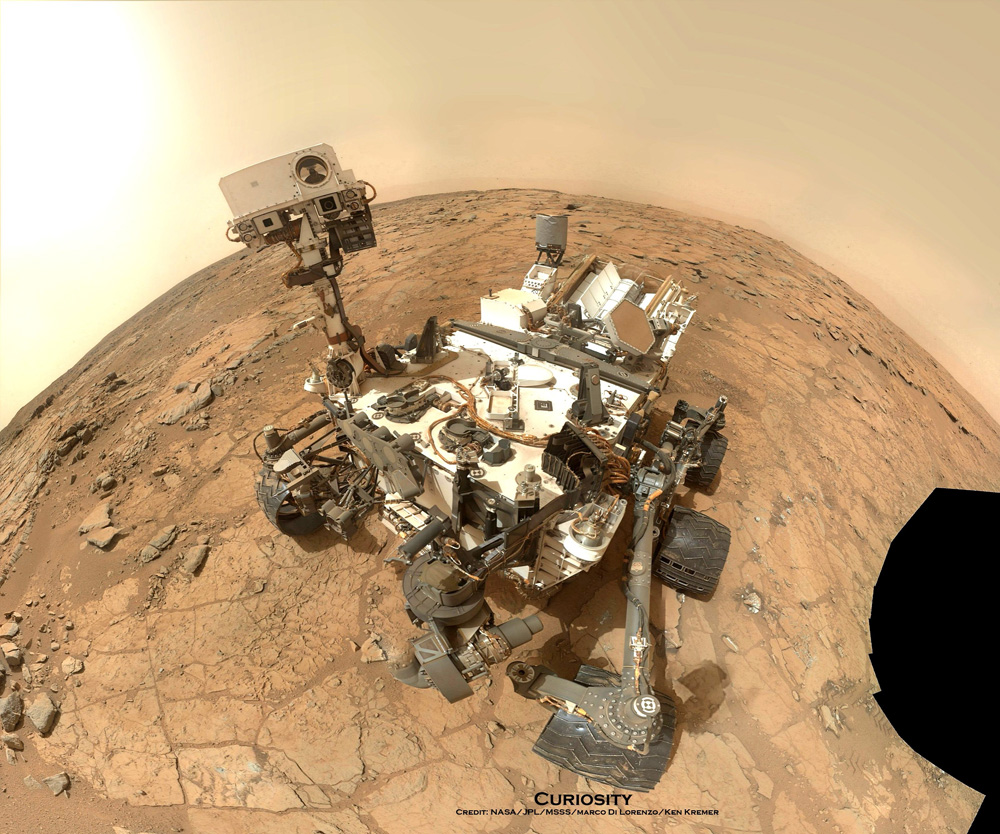Mars Rover Curiosity Bounces Back from Electrical Glitch

NASA's Mars rover Curiosity is back in action after being sidelined for nearly a week by an electrical problem.
The 1-ton Curiosity rover resumed science operations on Saturday (Nov. 23), six days after mission engineers noticed an odd voltage change and stood the robot down to investigate.
"We made a list of potential causes, and then determined which we could cross off the list, one by one," rover electrical engineer Rob Zimmerman, of NASA's Jet Propulsion Laboratory in Pasadena, Calif., said in a statement.
The mission team eventually determined that the likely cause of the change in voltage was an internal short in Curiosity's radioisotope thermoelectric generator, which powers the rover by converting the heat of radioactive decay to electricity.
The electrical glitch shouldn't have any lasting effects, mission team members say.
"Due to resiliency in design, this short does not affect operation of the power source or the rover," NASA officials wrote in a Curiosity status update today (Nov. 25). "Similar generators on other spacecraft, including NASA's Cassini at Saturn, have experienced shorts with no loss of capability."
The voltage difference between Curiosity's chassis and power bus had been about 11 volts since the rover touched down inside Mars' Gale Crater in August 2012. On Nov. 17, engineers noticed that it had dropped to just 4 volts and called a halt to the rover's science operations in response. But the difference returned to 11 volts on Nov. 23, officials said.
Breaking space news, the latest updates on rocket launches, skywatching events and more!
Curiosity's main task is to determine if Mars has ever been capable of supporting microbial life. The mission has already answered that question in the affirmative, finding that a site in Gale Crater called Yellowknife Bay was indeed habitable billions of years ago.
Curiosity is now engaged in a long trek to the base of the towering Mount Sharp, whose many layers record a history of Mars' changing environmental conditions over time. The rover should reach Mount Sharp sometime around the middle of next year, mission team members have said.
In its return to science operations over the weekend, Curiosity used its robotic arm to deliver powdered rock to some of its onboard instruments. The rover had stored this powder in its arm since drilling into a target rock called "Cumberland" six months ago, NASA officials said.
Follow Mike Wall on Twitter @michaeldwall and Google+. Follow us @Spacedotcom, Facebook or Google+. Originally published on SPACE.com.

Michael Wall is a Senior Space Writer with Space.com and joined the team in 2010. He primarily covers exoplanets, spaceflight and military space, but has been known to dabble in the space art beat. His book about the search for alien life, "Out There," was published on Nov. 13, 2018. Before becoming a science writer, Michael worked as a herpetologist and wildlife biologist. He has a Ph.D. in evolutionary biology from the University of Sydney, Australia, a bachelor's degree from the University of Arizona, and a graduate certificate in science writing from the University of California, Santa Cruz. To find out what his latest project is, you can follow Michael on Twitter.

